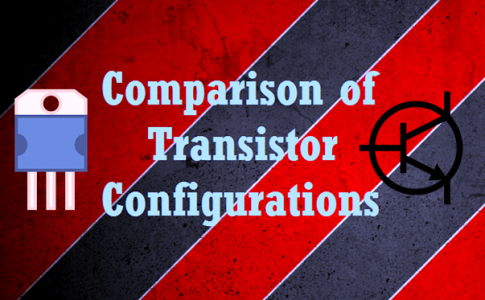Insulation Materials used in Transformers and Induction Motors
Insulation materials used in transformers and motors are classified based on the temperature withstand capability.
Some of the insulation classes used in transformers and induction motors are: Class Y, Class A, Class E, Class B, Class F, Class H and Class C.
Class Y:
- Maximum hot spot temperature for this type of insulator is 90oC
- Some of the materials used are cotton, silk, paper, wood without impregnated
Class A:
- Maximum hot spot temperature for this type of insulator is 105oC
- Cotton, Silk, and Paper when suitably impregnated are the type of materials used
Class E:
- Hot spot temperature is 120oC
- Materials possessing degree of thermal stability allowing them to be operated at a temperature 15oC above higher than Class A. Ex: wire, enamel etc
Class B:
- Maximum hotspot temperature is 130oC
- Mica, Glass fibre, asbestos, etc with suitable impregnation or coating substance
Class F:
- Hot spot temperature is 155oC
- Mica, glass, asbestos etc with suitable binding impregnation or coating substances capable of withstanding 25oC higher than Class B
Class H:
- Maximum hotspot temperature of 180oC
- Combination of materials such as mica, glass fibre, asbestos suitably bonded
Class C:
- Hotspot temperature above 180oC
- Mica, porcelain, glass, quartz and asbestos with and without inorganic binder
Different Tests conducted on Transformers
Some of the difficulties encountered in testing large transformers are:
- For carrying out tests for large transformer huge amount of energy is wasted
- For carrying out direct tests by loading the transformer large amount of load is to be available at the test center
Therefore the performance characteristics of the transformer can be computed from the equivalent circuit parameters which in tern may be obtained by carrying out simple tests on the transformer.
Some of the tests that are conducted on transformers are:
PolarityTest:
Polarity test on the transformer helps to determine the same instantaneous polarity of the transformer. The relative polarities of the primary and secondary terminals at any instant must be known for connecting the windings of the same transformer in parallel
Open Circuit Test:
This test isalso called as no load test. This test helps to determine the core losses in the transformer.
Short Circuit Test:
Short Circuit test of a transformer helps to determine the full load copper losses for a given transformer.
These open circuit and short circuit tests are carried out not by directly loading on the transformer. Core Losses and Copper Losses can be determined from the open circuit and short circuit tests respectively. Therefore by carrying out these two indirect tests efficiency at different loads and regulation of the transformer can be determined for different power factors
Sumpner’s Test:
This is also called back to back test. In open circuit and short circuit tests no information is obtained about the temperature rise. In sumpner’s test, two identical transformers are load to the full power like regenerative test in dc machines, transformers draw only the power required to supply iron and copper losses of the transformers.
Voltage Regulation of Transformer
Voltage Regulation:
When the secondary of the transformer is loaded (from no load to full load), the secondary voltage changes even though primary supply voltage is held constant at rated value.
% Voltage Regulation = (V2(no load) – V2 (full load))*100 / (V2(no load))
With the rated voltage applied to the primary winding, the secondary terminal voltage varies with the load current and power factor even the primary voltage is kept constant. This variation is called voltage regulation.
Voltage regulation depends on the voltage drop in the impedance of the transformer, load current and load power factor.
Leading and Lagging power factor regulation:
- For lagging power factor load the secondary voltage decreases with increase in the load current (when the transformer is loaded). Thus for lagging power factor loads, the regulation is positive ( voltage drop observed as the load current increases).
- For leading power factor load, the secondary voltage increases slightly with increase in the load current. This type regulation. Thus for leading power factor loads, the regulation is negative (raise in voltage as load current increases)
For better performance of the system voltage regulation should be as minimum as possible i.e, Change in secondary voltage with load should be as minimum as possible when primary voltage is kept constant.
What is excitation current or magnetising current in Transformer?
The no load primary current provided to the transformer is called magnetising current or excitation current. This current is used to produce the flux in the transformer core and overcome the no load losses (core losses) of the transformer. This excitation current will be of the range from 2 to 5 percent of the rated full load primary current.
Why power factor of the transformer under no load is very low?
During no load condition of transformer, the excitation or magnetizing current flow in the primary winding of the transformer. This excitation current is made up of large component of magnetizing component of current (Im) which is in quadrature with the applied voltage and comparatively small in phase component of current (Ie) which is in phase with the applied voltage. Thus due to large magnetizing component, power factor of the transformer will be very low. Power factor will be usually 0.1 to 0.2 lag.
What is the relation between applied voltage and emf induced with respect to flux wave?
Under no load condition and considering no losses
- Induced emf in both primary and secondary lags behind the main flux by 90o.
- Applied voltage to primary winding leads the main flux by 90o and is in phase opposition with the induced emf in the primary winding (V1= -e1)
- Secondary voltage V2=e2 as there is no voltage drop in the secondary.
